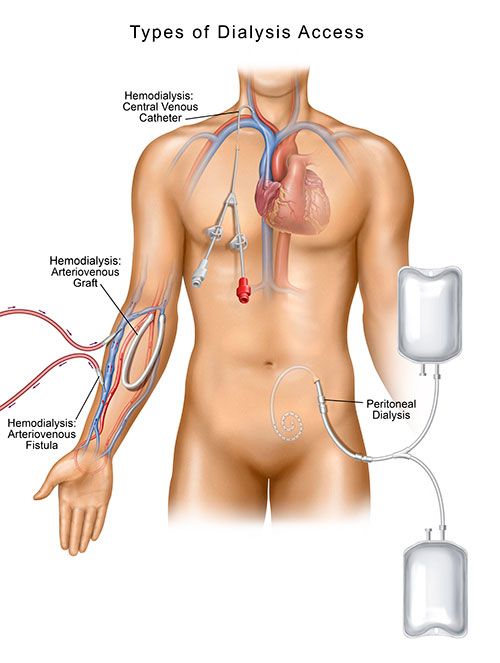To gain a comprehensive understanding of what constitutes a PD catheter, it is imperative to first delve into the two distinct approaches to dialysis and comprehend their respective mechanisms.
Dialysis is broadly categorized into two types: hemodialysis and peritoneal dialysis.
In hemodialysis, blood is extracted from your body and directed to a machine featuring a filter known as a dialyzer, often referred to as an artificial kidney. With the assistance of this machine, the dialyzer filters your blood to remove excess fluid and waste products, subsequently returning the filtered blood to your body. This intricate process involves connecting your vascular access to flexible tubes, facilitating the smooth flow of blood to and from the dialysis system. Central venous catheters, along with AV fistulas and grafts, represent the primary types of hemodialysis access.
In peritoneal dialysis, the approach differs from hemodialysis as it doesn’t involve connecting to a dialyzer. Instead, the inner lining of your abdomen, known as the peritoneal membrane, serves as a natural filter. A vascular specialist at Our Surgery Center – Long Beach, places a soft tube, referred to as a catheter, into your abdomen. Through this catheter, a sterile cleansing solution is introduced into your body. This solution plays a crucial role in the filtering process, and once the filtration is complete, the fluids are drained from your abdominal cavity using the same catheter.


